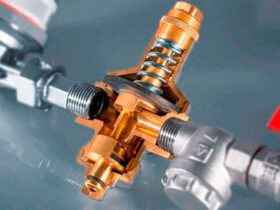The cellar is formed under different residential structures, and its parameters depend on the characteristics of the foundation of the structure and on how height the base was made. The purpose of the cellar is the storage of various grocery blanks, since the optimum temperature and humidity are set for this, however, but only if the correct insulation work is carried out. If this is not done, then the humidity will be too high, which will lead to rapid decay of products.
As a rule, internal insulation of the cellar is carried out, which can be implemented by different technologies and using various materials.
Creating a ventilation system and laying waterproofing
For the formation of optimal insulation, it is important to protect thermal insulation materials from moisture and high humidity. For this, a high -quality ventilation system is created, as well as waterproofing materials are laid.
Therefore, the following works are carried out before the insulation:
a blind area is formed that protects the cellar from the external effects of atmospheric precipitation and talus snow, and it consists of special drainage channels;
External treatment of the walls of the structure with special waterproofing compounds is carried out, and coating or penetrating waterproofing can be used depending on the material from which the cellar was created;
Heillings in the cellar are created that provide good ventilation, and can also form channels for exhaust and lengthy ventilation, for which plastic pipes are used.
Insulation of the cellar using foam
Often, a standard and affordable foam is used to carry out thermal insulation work in the cellar, and it can also be replaced by a more modern variety — polystyrene foam. The advantages of the material include:
excellent thermal insulation parameters;
a small mass that does not have loads on the soil and the foundation of the house;
low cost;
resistance before mold or decay;
stability before moisture, which cannot affect the positive properties of the insulation.
But the polystyrene is not devoid of disadvantages that include:
During heating the material, an unpleasant and pungent smell occurs;
When exposed to direct fire, it quickly lights up, and during the combustion the substances harmful and even dangerous to humans are distinguished;
Environmental friendliness is at a low level.
You can use foam for insulation of the cellar for its different surfaces, and for this you do not need to create any frames at all or implement other complex preparatory work. Foam plates are simply glued to different surfaces using high -quality adhesive solution. Additionally, to ensure the perfect and reliable mount, you can use mechanical fasteners, and the most optimal choice will be dowels equipped with wide hats.
So that condensation does not form on the thermal insulation layer, it is hidden by a vapor barrier film, and all the joints that are formed during its use are reliably and hermetically sealed with tape.
This work is usually performed on the walls of the room, but other technologies are used for the ceiling and floor of the cellar.
Features of the warming of the ceiling in the structure
The ceiling in the cellar is given the most attention, because if the cold will rise from this structure through the ceiling or pipes to the living quarters, you will have to spend a lot of money on heating, and it will also be simply uncomfortable in the rooms.
Stages of warming the ceiling:
Metal profiles are fixed to the base;
A building -up mesh using reinforcing bars is created;
All metal structures are covered with high -quality protective coloring compounds;
The remaining space between the frame and the base of the ceiling is completely filled with insulation presented in the form of plates, and it should be tightly entered into the cells, and also additional material is fixed with metal fasteners for a denser fit and reliable fastening.
How to insulate the floor in the cellar?
Different technologies can be applied for the floor, which include:
The use of expanded clay with good thermal insulation parameters and low cost. To do this, a vapor barrier film with an overlap on the walls is laid on the base of the floor. A layer of expanded clay is created, and you can choose several of its types. It is formed according to pre -established lighthouses to get a perfectly even surface. Typically, the thickness of the layer is 10 cm, and a concrete screed is formed on top with the obligatory use of reinforcing bars, which is well aligned.
Using sand mixed with gravel. For this, the base of the floor is aligned, after which a layer of crushed stone is created, equal to about 10 cm. A pillow of sand is formed from above, 5 cm thick, which is well trimmed. Next is the waterproofing layer, and the excellent choice would be to fill the surface with hot bitumen. At the end, a reinforced concrete screed is created.
Thus, insulation of the cellar is an important task that creates the necessary microclimate in the construction. It can be performed by different technologies using various materials, and all work can be implemented on its own.












Оставить коммент.